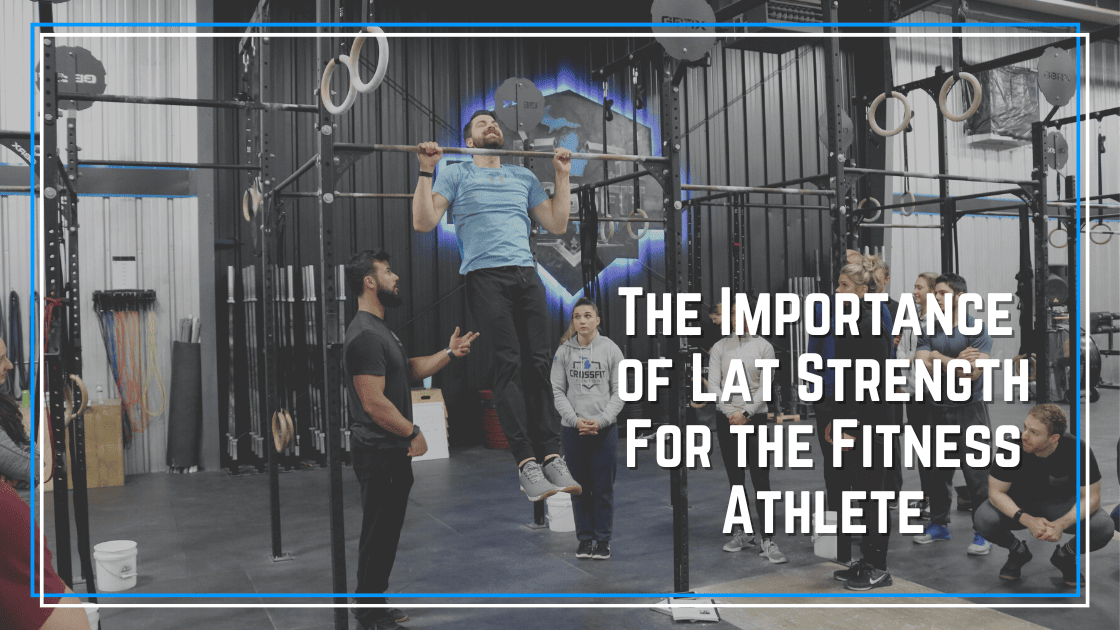Lat Strength In Fitness Athletes
Lat strength is incredibly important for CrossFit athletes. I commonly describe this muscle as the glutes of the upper body. In so many movements performed by fitness athletes, the lats are the prime mover and also protect joints such as the shoulder from unnecessary stress. It is essential to understand the role of lat strength in CrossFit athlete performance and rehab.
I initially discussed this on the PToneICE Daily Show podcast, which you can view below.
Diagnosing Lat Weakness
There are a few different performance indicators that will lead me to prescribe lat accessory work with the CrossFit athletes that I train.
First, is the inability to perform strict pull-ups, especially in athletes performing kipping pull-up variations. To control the dynamic forces that occur during kipping pull-ups, an athlete should have the pre-requisite strength of unassisted strict pull-ups. When athletes skip this step, we often see a jarring force occur in the shoulder as the athlete rapidly drops into the bottom of his or her pull-up. This motion puts lots of unnecessary load on the passive structures of the shoulder.
In CrossFit athletes that can perform a strict pull-up (or a few), I like to watch their strict pull-up form. For athletes with relatively stronger arms compared to their lats, we will see a common pattern of their elbows being out in front of their body during the pull-up. In contrast, what we see in athletes with more balance between lat and arm strength is a wider elbow position. This elbow position is demonstrated in the following video and a common issue I see in athletes dealing with elbow pain.
I also prescribe accessory lat work when I see difficulty keeping the bar close to the body during deadlifts and Olympic weightlifting. I often use an analogy of carrying grocery bags to explain this. We keep the bags close to our bodies, not without arms outstretched far from our bodies. The same is true with barbell lifts.
By keeping the bar close to the body, we improve our mechanics. The lats are important in maintaining proper bar path during Olympic lifts and deadlifts. The following video demonstrates what a deadlift bar path looks like with lats engaged and not engaged. See this article for further explanation of the physics behind lat engagement.
Best Exercises to Improve Lat Strength in Functional Fitness Athletes
What can we do when an athlete has some lat weakness? Pull-ups are a great choice, but for some athletes, the following variations will help them “feel” their lats working faster.
Banded Lat Rows
My favorite lat variation by far as the combination of weight plus band really works the lats. I always cue the athlete to focus on pulling his or her elbow back to the hip rather than pulling their hand vertical. This emphasis results in focus on shoulder extension rather than elbow flexion, which improves lat activation. Many athletes that never feel their lats with pull-ups and other pulling variations find this exercise/cue combo to be great.
Rack Chins
With rack chins, the arms are stretched overhead with the hips flexed, taking the lats to their maximum length. Performing rack chins with slow tempo into this stretched position makes for a fantastic strength and hypertrophy exercise. Using a barbell, you can also very easily progressively load this movement.
Straight Arm Pulldowns
By performing pulldowns with a straight arm, we eliminate bicep involvement and keep all the focus on the lats. This exercise is my go-to movement for athletes performing pull-ups with the elbow forward technique described earlier.
Hinge with Pullover
This exercise is for athletes needing some focus on engaging the lats during Olympic lifts and deadlifts. We can perform many variations of this: with and without the pullover, while practicing the first through second pulls of the Olympic lifts, with just a PVC pipe, or with a loaded barbell. Get creative to meet the needs of the athlete with this one.
Wide Pulldowns
By having the athlete focus on pulling his or her elbow to their side, this drill really emphasizes lats more than biceps.
Inverted Rows
Compared to the barbell row, the inverted row uses the upper back muscles more. Many athletes will see significant pull-up strength gains by training strict, slow tempo inverted rows for a few weeks.
There are many more exercises that I will occasionally prescribe for lat strength in CrossFit athletes. But in this population, the above tend to be the ones that give my athletes the most success.
If you need more comprehensive plans to improve your strength, check out these programs we offer in Performance Plus Programming.






